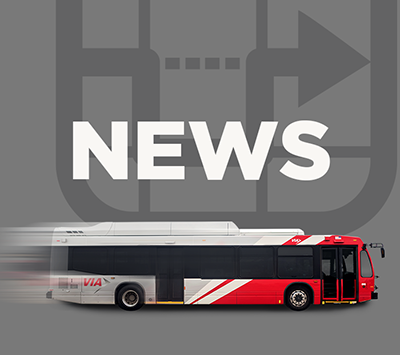Budget keeps fares low, plans for new projects, continued ridership growth
VIA Metropolitan Transit’s Fiscal Year 2023 budget keeps the agency focused on improvements for mobility in San Antonio, with service adjustments and innovations, and advancing Keep San Antonio Moving (KSAM) projects, including two Advanced Rapid Transit corridors and two new VIA Link zones, designed to move more people faster and farther.
VIA’s Board of Trustees unanimously approved the FY23 Operating Budget and Five-Year Capital Plan on Tuesday. The total consolidated budget in FY23 is $406.6 million ($274 million operating, $132.6M capital) with no fare increases. The new fiscal year begins October 1.
Work related to VIA’s new Advanced Rapid Transit (ART) project—a hallmark of the plan—will continue with the North/South corridor from the San Antonio Airport, along San Pedro Avenue, through Downtown and south to the Missions area, and a second corridor connecting East to West with frequent, rapid service is being developed. The transformative project is the first in San Antonio to leverage federal dollars in the form of Capital Investment Grants and represents a key focus of VIA’s year-over-year investment increases.
Various other projects and initiatives like VIA’s NaviLens Wayfinding system for customers who are visually impaired are designed to significantly improve mobility for all San Antonians.
To support recovery and growth projected in the new fiscal year VIA will pursue a robust program of recruiting and retaining bus/van operators and mechanics. Hiring and referral bonuses will continue for drivers and fleet maintenance staff.
VIA’s $748.4 million Five-Year Capital Plan (FY23-27) includes $499 million, or 67% of the total, to support KSAM. It will allow for the purchase of 17 Prímo buses, 50 Compressed Natural Gas (CNG) buses, and 15 vans in FY23. From FY23-27 VIA will add 103 CNG buses and 139 vans. The remainder covers various facilities and other projects.
The FY23 budget was developed looking at a five-year planning horizon. Plan elements evaluated in building the budget include: the Board’s strategic priorities; service levels; customer service improvements; capital requirements; available grant funding and other funding sources, including debt; operating expenses; and cash reserve requirements.
